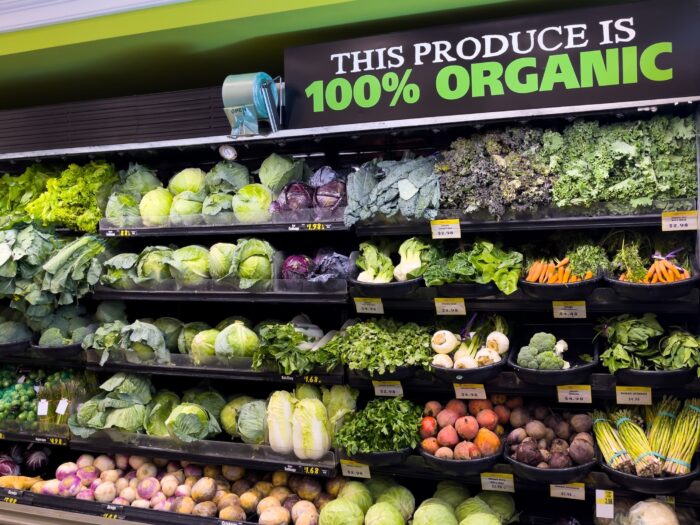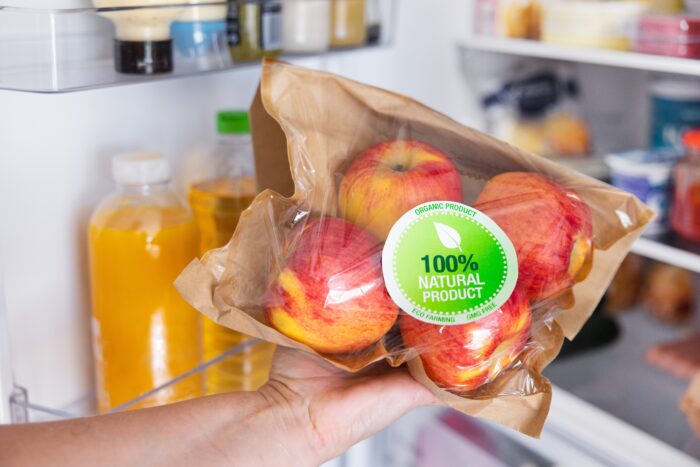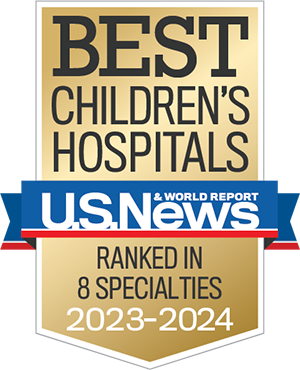By Suzy Gadd, a registered dietitian resident in the clinical nutrition program at Rady Children’s Health Orange County
Understanding food labels
It can be easy to get confused by food labels, especially with terms such as “organic,” “natural,” or “healthy.” Telling these words apart from one another can be very tricky. While they all sound similar, they mean very different things. Understanding the differences can help clear up any misunderstandings and help you shop smarter!
Organic foods
- Foods that follow special rules set by the United States Department of Agriculture (USDA), the government group that makes sure food is safe.
- Fruits and vegetables that are grown without synthetic pesticides, chemical fertilizers, or genetically modified organisms (GMOs).
- If pesticides are used, they must be on the National List of Allowed and Prohibited Substances by the USDA.
- Meat sources, like cows, chickens, or pigs, must be raised without antibiotics or growth hormones and must eat organic feed.
- Foods in the store with a USDA Organic seal, must be made with at least 95% organic ingredients.
- Foods that say they are “made with organic materials”, must use at least 70% organic ingredients, but these foods cannot use the USDA seal.
- Organic foods are not always more nutritious than regular foods, but they usually have less exposure to chemicals and pesticides.

“Natural” food
- The government only has a definition for “natural” meat and poultry, meaning meat and poultry with the “natural” label are minimally processed and do not use artificial ingredients.
- “Natural” can mean food doesn’t have artificial colors, flavors, or preservatives, but there are no official guidelines that guarantee anything about how the food was grown or made.
- Some “natural” foods can still have a lot of added sugar, salt, or be highly processed, like “all-natural” potato chips or soda.
- Even though some “natural” foods are healthy, the word mostly acts like a marketing trick to make the food sound better.

“Healthy” food
- “Healthy” usually means the food gives your body lots of nutrients, like vitamins, minerals, fiber, and healthy fats, and has less added sugar, salt, and unhealthy fats.
- What is “healthy” can be different for different people because it depends on their age, health and personal goals.
- “Healthy” foods are mostly about nutrition, not about how the food is grown, made, or labeled.
- Eating “healthy” in general is making sure you have a balanced diet with lots of fruits and vegetables, protein sources, and carbohydrates.

In the fall, there are lots of great farmers’ markets around Orange County filled with healthy foods. Linked are some of the different farmers’ markets and when they take place.
Farmers markets
Orange: https://www.orangehomegrown.org/farmers-market
- Saturdays, 9 a.m.–1 p.m.
Newport Beach: https://www.farmhabit.com/
- Sundays, 9 a.m.–1 p.m.
Laguna Nigel: https://www.ocfarmbureau.org/shop-at-farmer-s-markets
- Sundays, 8 a.m.–noon
Irvine: https://www.ocfarmbureau.org/shop-at-farmer-s-markets
- Tuesdays, 9 a.m.–1 p.m.
Old Town Tustin: https://www.ocfarmbureau.org/shop-at-farmer-s-markets
- Wednesdays, 9 a.m.–1 p.m.
Brea: https://www.ocfarmbureau.org/shop-at-farmer-s-markets
- Thursdays, 3–7 p.m.
Laguna Hills: https://www.ocfarmbureau.org/shop-at-farmer-s-markets
- Fridays, 9 a.m.–1 p.m.
Irvine: https://www.ocfarmbureau.org/shop-at-farmer-s-markets
- Saturdays: 8 a.m.–noon
Get more expert health advice delivered to your inbox monthly by subscribing to the KidsHealth newsletter here.
Learn more about CHOC’s Clinical Nutrition Program
At CHOC, we specialize in providing a full continuum of pediatric nutrition services, including inpatient and outpatient services, depending on our patients’ needs.





